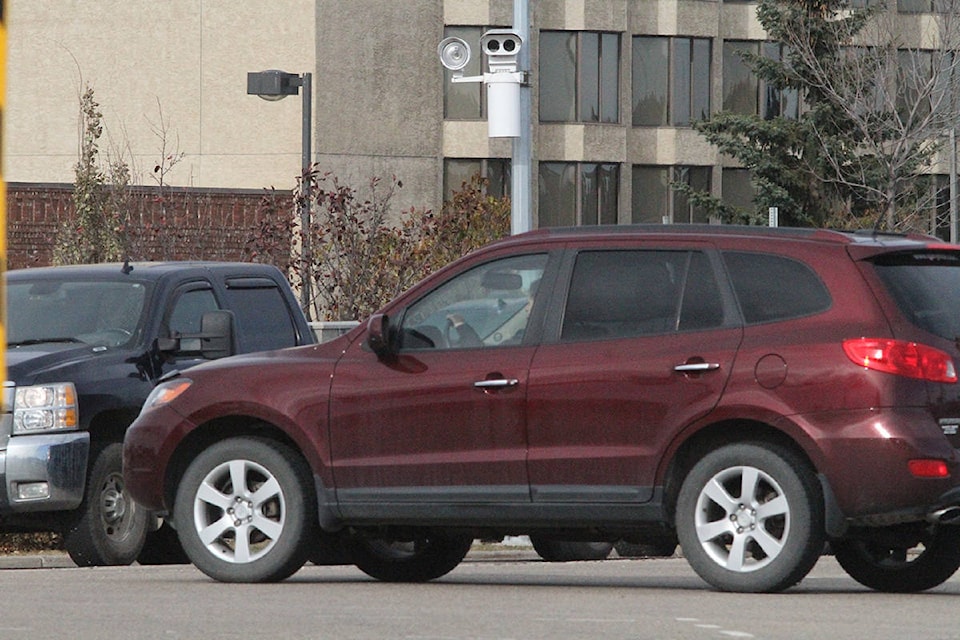Photo radar is coming back to Lacombe.
Backed up by statistics showing the speeding and red light cameras successfully reduced collisions in Red Deer, Calgary and other communities, city council voted 5-2 this week to bring back automated traffic enforcement four years after dropping photo radar amidst controversy.
The initiative has been promoted by Lacombe Police Service Chief Lorne Blumhagen, who told council two weeks ago he was concerned by growing numbers of collisions and speeding drivers at several key intersections.
Blumhagen proposed setting up photo radar and red light cameras at three intersections: 50th Avenue and Woodlands Drive, Highway 2A and 50th Avenue and Highway 2A at Woodlands Drive. He hoped to cut collisions by almost half at the intersections.
Lacombe police statistics show collisions are on the rise: 210 in 2016, 222 in 2017 and 236 in 2018.
Council directed staff to investigate other communities to see how effective the cameras were.
Red Deer reported that between 1999 and 2011, right-angle collisions were down 50 per cent, left-turn crashes were down 60 per cent and rear-end collisions dropped seven per cent after cameras were set up.
In Calgary, the cameras were set up in 2001, and by 2013, the number of collisions of all kinds at monitored intersections was cut by seven per cent. Fatal collisions had been eliminated and injury collisions were down four per cent.
Lacombe is projecting to raise around $325,000 annually from speeding and red light tickets, based on revenues it got the last time photo radar was used.
Council plans to use revenues to build a $3-million reserve fund, which would take about a decade to bank.
Coun. Reuben Konnik said the new program is different than the approach taken with photo radar previously, which he voted to drop in 2015.
“It was much different than this, in that it was quite apparent after a certain amount of time that that program was designed solely to generate revenue, especially the way they were set up,” said Konnik.
Safety and reducing collisions is the goal this time.
Konnik said driving into Red Deer, he has seen how successfully the intersection cameras slow down traffic.
“The cameras are there and it’s remarkable how many people actually obey the speed limit … because they know that they’re there.”
Councillors Thalia Hibbs and Cora Hoekstra opposed the motion to send out a request for proposals for an automated traffic enforcement system.
Hoekstra questioned whether the statistics on reduced collisions provided to council were good enough to support adopting the technology.
“In essence, it’s a hidden tax on some people,” she said.
Hibbs saw the fines connected with the cameras in a similar light.
“I’m sorry, semantics aside, it’s a speed tax.”
Hibbs said she was concerned that the use of the cameras would mean local police did less traffic enforcement.
She would only support the initiative if all revenue was directed toward safety initiatives, she added.
“(The proposal) puts too much onus on the revnue side of it and not enough on safety. To me, there has to be a balance and I don’t think the proposal reflects that.”
Once proposals are submitted by contractors, they will be taken to the police committee for review. A recommendation will then be sent to council.
pcowley@reddeeradvocate.com
Like us on Facebook and follow us on Twitter
